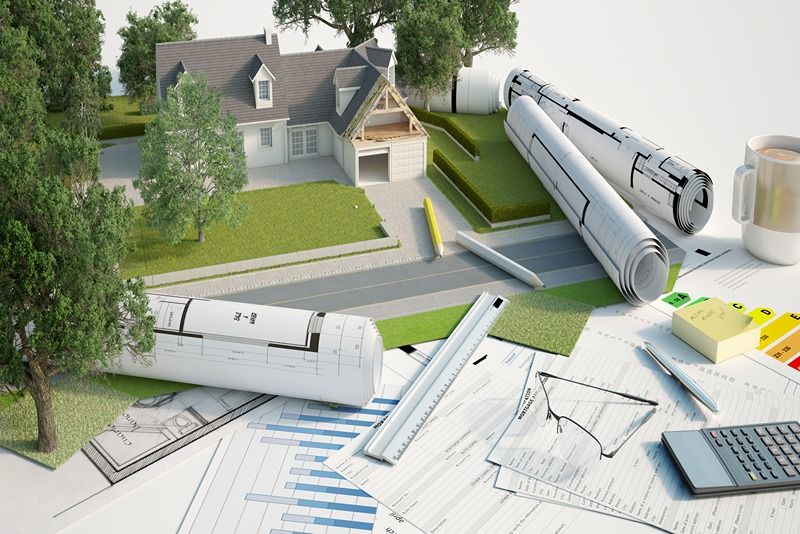Creating a building that balances strength and style is both an art and a science. Whether you’re working on a residential, commercial, or public project, combining durability with aesthetic appeal ensures a space stands the test of time while leaving a lasting impression. By thoughtfully blending architectural elements, materials, and designs, you can achieve a structure that is not only functional but also visually striking. Here are some practical tips to help you craft a beautifully robust building.
Prioritize Material Selection
The materials you choose are fundamental in creating a strong, stylish building. Always opt for materials that offer durability alongside elegant finishes. Some of the most popular options include:
- Concrete and Steel: These are classic choices for structural stability. They form the backbone of resilient buildings, providing high tensile and compressive strength. Pair them with creative architectural finishes to soften their industrial look.
- Natural Stone: Timeless and versatile, stone adds a touch of luxury while being weather-resistant. Natural stone lends enduring appeal when used for walls, flooring, or accents.
- Weatherproof Wood: Engineered wood is an excellent option for warm, inviting aesthetics. It combines traditional charm with better resistance to pests and wear.
- Innovative Materials: Explore newer options like ultra-high-performance concrete, which blends sleek design with exceptional durability.
For a statement-worthy exterior, pre-cast stone veneer promontory can fuse ruggedness with refinement in a way that captivates onlookers.
Consider Structural Integrity Early
Behind every beautiful building is a strong core. Collaborate with engineers and architects at the earliest planning stages to ensure every aspect of the structure is designed for safety and longevity. Key elements to focus on include:
- Foundation Strength: A well-executed foundation is critical to your building’s durability. Soil analysis and proper site preparation are vital for avoiding long-term structural issues.
- Load-Bearing Solutions: Incorporate efficient frameworks designed to manage the building’s weight and withstand environmental stressors like wind or seismic activity.
- Moisture Protection: Prevent water damage by implementing waterproofing solutions like drainage systems, moisture barriers, and protective coatings.
Harmonize Form and Function
The most successful architectural designs find a seamless balance between practicality and aesthetics. To achieve this, consider the following approaches:
- Unified Design Theme: Select an architectural theme that resonates with the purpose of the building. For instance, minimalist styles might work best for modern office spaces, while traditional designs suit cultural or historical projects.
- Maximized Natural Light: Incorporate large windows, skylights, or atriums to brighten interiors, reduce energy consumption, and create an inviting atmosphere.
- Well Thought-Out Layouts: Design with functionality in mind. A thoughtful floor plan can enhance usability while maintaining visual harmony.
Architectural details like decorative arches, facades, or cornices can add style without compromising the building’s robustness.
Leverage Sustainable Practices
Durability isn’t just about standing the test of time; it also means being sustainable in the face of environmental challenges. By incorporating eco-friendly practices, today’s buildings must go beyond aesthetics and structural strength. Here’s how:
- Energy Efficiency: Use materials and systems that reduce energy consumption, such as insulating materials, energy-efficient windows, and solar panels.
- Recyclable and Renewable Resources: Opt for sustainably sourced or recyclable materials, helping minimize waste and reduce the carbon footprint.
- Green Roofs and Landscaping: Adding vegetation to rooftops or open areas improves insulation, promotes biodiversity, and softens the building’s visual impact.
Combining these elements ensures environmental responsibility and enhances the building’s long-term appeal.
Invest in High-Quality Finishes
Subtle details often make the most significant impact on aesthetics. Focus on premium finishes to turn structural pieces into architectural masterpieces. Consider options such as:
- Facade Treatments: Cladding materials like stone, metal, or brick create that “wow” factor without compromising durability.
- Interior Statement Pieces: Use exposed beams, polished floors, or textured feature walls to elevate the character of indoor spaces.
- Durable Outdoor Elements: Patios, walkways, and landscaping should use materials that withstand wear and weather. For example, using reinforced pavers or sealed stones ensures long-lasting beauty outdoors.
Plan for Future Proofing
A robust, stylish building should still serve its purpose decades later. Future-proofing your design protects the building from becoming obsolete. To accomplish this, think ahead:
- Multi-Use Spaces: Create adaptable areas that can evolve with changing needs.
- Smart Technology: Incorporate smart HVAC systems, lighting, and security features that enhance user experience and energy efficiency.
- Long-Term Maintenance Plans: Use materials and designs that require minimal upkeep while withstanding everyday wear and tear.
Addressing these factors during the design phase allows future renovations or changes to be executed easily while maintaining the building’s original charm.
Conclusion
When strength meets style, a building captures attention while enduring even the harshest conditions. You can achieve the perfect balance of durability and elegance by carefully selecting quality materials, focusing on core structural elements, and incorporating timeless aesthetics. Whether through innovative facades or meticulous interior finishes, there’s great satisfaction in creating a structure that stands strong today and adapts seamlessly to tomorrow.
